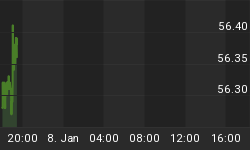Populism may have made some massive gains in 2018, from Brazil to Italy and a number of venues in between, but economics is likely to catch up with the trend and it’s not going to be pretty.
Sure, people around the world are tired of living under the austerity that hit them following the 2008 financial crisis. And they’re tired of the suffocating globalization and the win-win for the elite. They want payback, and they believe they’ll get it through populist leaders.
But those leaders and their high-flying promises of state-funded prosperity aren’t necessarily considering the longer-term (or even the medium-term) economic picture here. All evidence suggests that they can’t pay for their promises.
Populism has been festering in Europe for years, and Trump’s victory in the U.S. was decidedly populist. In 2016, the Philippines ushered in populist president Rodrigo Duterte, and just yesterday, Brazil followed suit with the inauguration of far-right President Jair Bolsonaro. In Italy, the victory of a coalition of far-right populist leaders has already given us a glimpse of the economic pain to come as the country goes head-to-head with the EU over a budget that Brussels fears could bring down the entire union.
Italy, now, enters 2019 bracing for a recession as December numbers showed that manufacturing shrank for the third month in a row. Manufacturing activity was at 49.2 for December, and needs to be at 50 or above to be considered an upward trend. In November, the Italian economy contracted for the first time in four years, with GDP dropping 0.1 percent from July to September.
For the populists, including Trump, economic policy is necessarily dictated not by the market but by public popularity; thus, when populist leaders feel threatened, they use high-profile measures to fight back in the public.
Italy’s populists have used the 2019 budget, battling with the European Union in the public eye to gain political capital. In the end, they lost some of that capital by revising their 2019 budget in a way that opponents say they caved to Brussels to some extent, but the battle to get there strengthened them enough to survive what comes next. After a lengthy standoff with the EU, Italian parliament passed the 2019 budget in the last days of December, lowering its planned budget deficit from 2.4 percent of GDP to 2.04 percent. It was less than Brussels wanted, but too much for opponents.
Related: New Regulations Could Boost Lagging Solar Growth
The anti-establishment elements of the new budget include a “citizens’ wage” income support scheme that will hand out nearly $900 a month to 1.7 million poor Italian families. It also includes a slashing of the retirement age from 67 to 62 for certain workers, and a tax cut for self-employed workers.
The numbers just don’t add up, and investors are concerned that given Italy’s mountain of debt, it could slip into recession.
Then we have Brazil, where Bolsonaro’s populist appeal is the opposite of Italy’s—he’s got to implement austerity measures, which makes his flirtation with populism rather more vulnerable. In other words, his challenge is to make austerity popular and bring down a worrisome budget deficit of over $47 billion.
The jury is still out on this one, and investors are maintaining their optimism, particularly because the new president’s economic team is led by a former investment banker.
His main cheerleader is Trump himself, which brings us full circle to the United States, where the Democrats’ unrelenting investigations and a government shutdown will push the populist American president to act very publicly. Whatever happens has to be big and sweeping in order to wrest attention from the Democrats’ attacks.
In the meantime, global markets have to somehow price in populism, and they are likely to put a high price on fiscal irresponsibility. This is where markets decide whether populists can have their cake and eat it, too.
By Michael Kern of Safehaven.com
More Top Reads From Safehaven.com

















